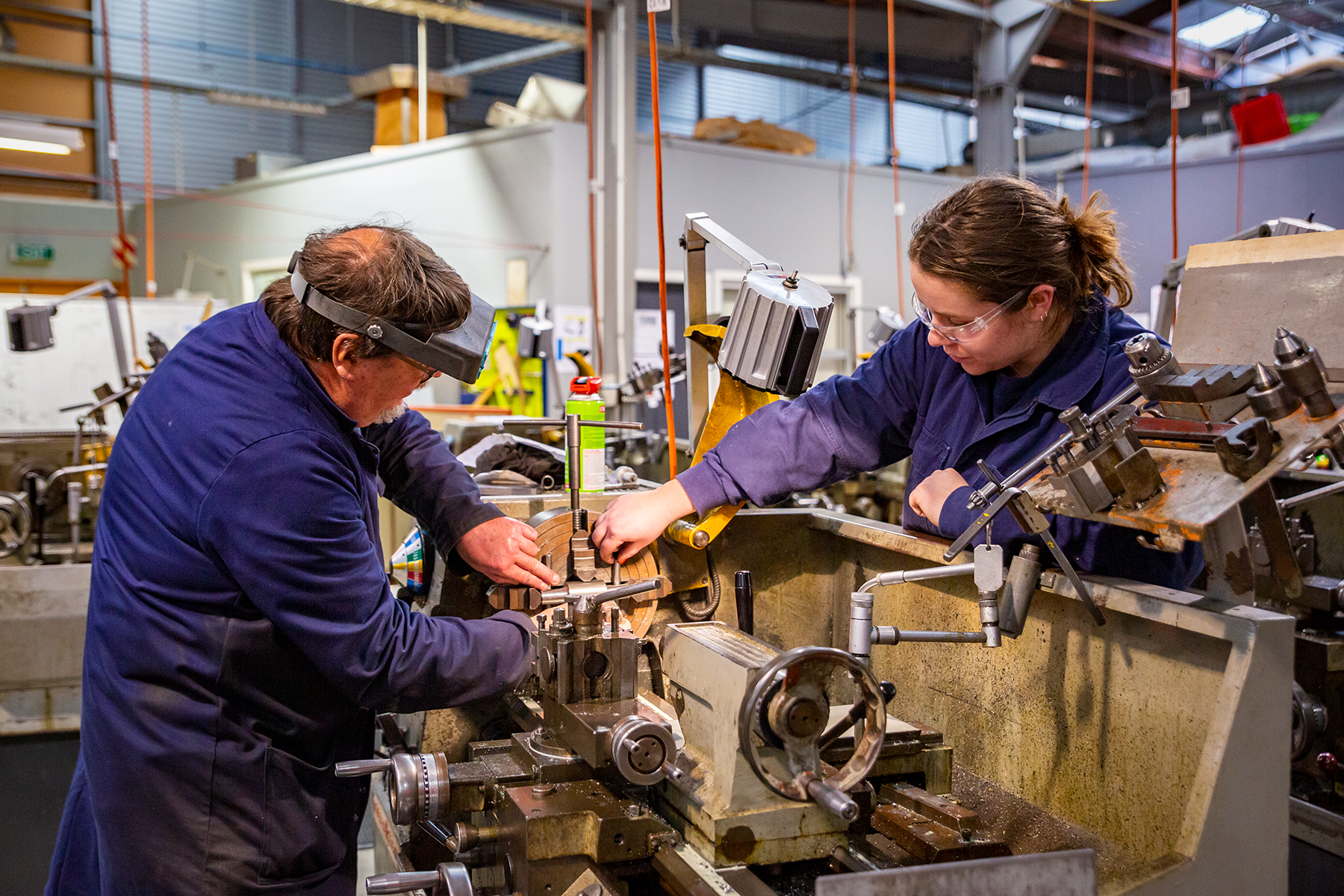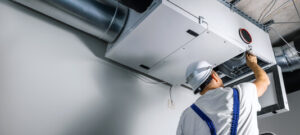Hubbard Mechanical is about machinery and the physical forces that make things move. It’s also about how manual labor and human skills are used.
From micron-scale devices that make your phone vibrate to the massive engines of spacecraft, it’s hard to think of anything that exists today without some mechanical input. This is what makes Mechanical so intriguing.

The design of a mechanical system is an important part of the engineering process. It includes the creation of a new machine or product, as well as enhancing an existing one. It also involves determining how different mechanical parts will interact with each other and their environment. Engineers specializing in mechanical design often use CAD software to create and modify prototypes. They may also test their designs in virtual environments to determine how they will perform in real life.
Optimal performance in mechanical systems focuses on efficiency and reliability. It involves maximizing energy efficiency through component integration, advanced materials selection, smart control systems, energy recovery, and predictive maintenance. It also consists in minimizing waste and reducing operational costs. These strategies can help a company reduce energy consumption while achieving greater productivity.
The best design in the world can only do so much good if it can be manufactured at an affordable cost. This is why many mechanical designers work closely with their machine shop to ensure their designs can be produced and assembled. It also helps to understand the capabilities and limitations of the manufacturing equipment before a design is finished. This allows the designer to plan for machining issues that might arise.
Mechanical designers must have a strong understanding of the principles of geometry and trigonometry, as well as computer-aided drafting (CAD) software. They must also be able to communicate clearly with other members of their team and clients and follow technical instructions. Additionally, mechanical designers must have excellent problem-solving skills, as they often need to resolve unique challenges in creating a prototype.
In addition to their technical expertise, mechanical engineers must have a creative mindset. They must find innovative solutions to problems that cannot be solved with traditional tools and processes. They must also be able to identify and assess risks, as they are responsible for the safety of their work.
While a degree in mechanical engineering is necessary for most mechanical designers, several other career options offer a similar scope. For example, a degree in computer science can also provide an excellent foundation for this field.
Analyzing mechanical systems is one of the most important and complex aspects of mechanical engineering. The ability to correctly analyze a mechanical system requires a profound understanding of the physical properties of materials and the laws of motion. Using mathematical tools such as differential equations and integral calculus is also essential.
The first step in analyzing a mechanical system is to determine its static condition or state at rest. This can be done using various methods, including free and forced vibrations and natural frequencies. It is also essential to understand the dynamic behavior of a mechanical system, including its response to load and speed changes.
Once the static condition of a mechanical system is determined, it can be used to calculate its dynamics. This can be done using free and forced vibrations or natural frequencies and harmonic analysis. The results of these calculations can then be used to determine the structural integrity of a mechanical system. The analysis of a mechanical system can also be performed to identify any potential problems before they occur. This can be done by performing a reliability analysis. The reliability of a mechanical system is defined as its ability to perform its intended function without failure or breakdown over a specified period. Reliability analysis is critical for ensuring safety, quality, and efficiency in various industries.
Another way to analyze a mechanical system is to use modal analysis. This method is used to determine the natural frequencies of a mechanical system and its eigenvalues and eigenvectors. This information can be used to develop a more stable product and reduce the chances of failure.
When designing a new machine, it is important to perform thorough analyses to ensure the design is safe and reliable. This can be done by analyzing the structural stability of the machine, assessing its fatigue, and testing the operation under different loads. It is also important to perform a modal analysis before sending the design to manufacturing. This can prevent costly mistakes and ensure the machine meets its performance requirements.
A mechanical system consists of devices, equipment, and components that perform a specific function, such as heating, cooling, ventilation, plumbing, or fire protection. These systems are usually designed to meet specific performance requirements and building codes. The most common types of mechanical systems include HVAC (Heating, Ventilation, and Air Conditioning) systems, which regulate the temperature, humidity, and air quality in a building.
Installing a mechanical system is an important part of the construction process and can significantly impact the overall project. The first step is to create a drawing describing the location and size of mechanical components, such as ducts, vents, pipes, and fans. This drawing will serve as a guide for contractors during installation. The next step is to install the mechanical system according to the drawings and local code requirements. The final step is to test the system and ensure all components work properly.
Installing safety features is one of the most important aspects of a mechanical system. These safety features include smoke detectors, carbon monoxide detectors, and fire alarms. Carbon monoxide detectors detect carbon monoxide, a colorless and odorless gas that can be produced by malfunctioning mechanical systems. These detectors alert occupants to any danger and allow them to take appropriate action before the problem gets out of hand. Fire alarms alert occupants to fires and can help them evacuate quickly and safely.
In addition to improving safety, installing a mechanical system during the Mechanical Rough-in phase can also increase energy efficiency. This is because it helps ensure all components are properly insulated and sealed. This will prevent air from escaping through gaps and cracks, reducing energy costs in the long run. It will also ensure that the components aren’t blocked by other structures, improving airflow throughout the building and reducing strain on the HVAC system.
Finally, the mechanical rough-in process can help extend the life of a mechanical system. This is because it ensures that all components are installed correctly and adhere to industry standards. This will reduce the risk of damage or failure, which can cause expensive repairs in the future.
The mechanical maintenance of a system includes repairing, inspecting, lubricating, and adjusting equipment, tools, appliances, and machinery. This may include examining, cleaning, and repairing industrial machines such as generators, compressors and pumps, fan units, power transmission devices, industrial ovens, and cooling towers.
Performing routine mechanical system maintenance is important to ensure that it functions properly and is protected from damage. This is done by inspecting, testing, and adjusting machinery regularly. Mechanical maintenance workers also install, operate, and perform repairs on various equipment such as refrigeration units, electric motors, elevators, heating systems, and electrical distribution equipment.
While a high school diploma is the minimum requirement for becoming a mechanical maintenance worker, many have an associate degree or certificate from a vocational or technical school. This can give them an edge over their competitors in the job market. In addition, a mechanical maintenance technician can take classes online or in-person to gain additional skills and knowledge about the various types of machines they are repairing.
These professionals work in various industries, including oil and gas refineries, food companies, and manufacturing plants. They repair and maintain complex machinery vital to these businesses’ operations. They also troubleshoot these machines and can determine what is causing them to break down.
In addition to their regular maintenance duties, mechanical maintenance mechanics often install new equipment and perform tests to ensure it functions properly. This can be a crucial part of the process for startup companies that use heavy machinery.
While the responsibilities of a mechanical maintenance mechanic differ from one company to the next, there are some common elements. They must have good manual dexterity and be able to read blueprints and painting plans. Mechanics must also be able to follow written instructions and procedures from an administrative superior. They must have excellent troubleshooting skills to detect and correct problems with mechanical systems quickly. Lastly, they must be able to work safely and follow all safety precautions while working on machinery.

